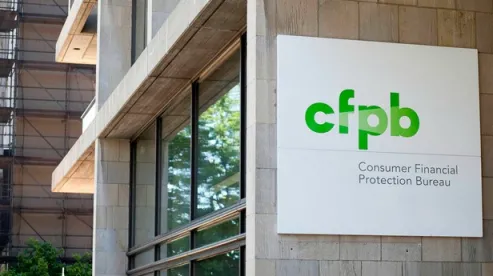As you will recall from CPW’s prior update (here), earlier this fall, the CFPB issued a final rule (the “Rule”) to implement the Fair Debt Collection Practices Act (“FDCPA”). 12 CFR Part 1006 et seq. The Rule is perhaps the most significant development affecting the debt collection industry since the FDCPA came into law over 40 years ago.
The Rule will take effect on November 30, 2021, one year after its publication in the Federal Register. The product of a seven-year rule-making process, the Rule comes in at a whopping 653 pages. CPW is providing a two-part analysis of this monumental development. In Part 1, we provided a general overview of the Rule and discussed important provisions regarding debt collection communications. Here, in Part 2, we will provide an overview of certain safe harbor provisions. In our forthcoming Part 3, we will discuss a forthcoming rule, to be released later this month (at an undisclosed date), which focuses on consumer disclosures.
Read on to learn more.
Safe Harbor Provisions
The Rule provides numerous safe-harbor protections for debt collectors under a variety of circumstances. The most relevant of these provisions are discussed below.
Voicemail Compliance
Voicemails and the FDCPA have a complicated history. Some courts have found that voicemails were “communications” under the FDCPA, thus creating situations where debt collectors were essentially foreclosed from leaving voicemails without violating the FDCPA. With limited options, some debt collectors opted to make repeated calls to consumers without leaving voicemails. This option, however, ran the risk of violating the FDCPA’s restrictions on harassing communications. What could be done?
Now, the “voicemail paradox” may be resolved. In perhaps its most significant development, the Rule creates a safe harbor for voicemail messages in the sense that it may not consider such messages to be “communications,” so long as certain procedures are followed. The Rule accomplishes this by including a new term, “attempt to communicate,” which are acts to initiate communications regarding a debt. In this sense, a voicemail left for a consumer by a debt collector can be an “attempt to communicate” and, thus, may qualify as a “limited content message.”
To be considered a “limited content message,” a voicemail should not include superfluous categories of information. In other words, a voicemail may contain some things, but not others, lest it be considered a “communication” and not a “limited content message.”
The CFPB provided specific instructions on the types of information that a voicemail should contain. Specifically, a voicemail may be a “limited content message” when it includes:
-
A business name for the debt collector that does not indicate that the debt collector is in the debt collection business;
-
A request that the consumer reply to the message;
-
The name or names of one or more natural persons whom the consumer can contact to reply to the debt collector; and
-
A telephone number or numbers that the consumer can use to reply to the debt collector.
In addition to the four enumerated categories above, a voicemail also may include, at most, any (or all) of the following:
-
A salutation;
-
The date and time of the message;
-
Suggested dates and times for the consumer to reply to the message; and
-
A statement that if the consumer replies, then the consumer may speak to any of the company’s representatives or associates.
Including any information in addition to the preceding eight categories runs the risk of converting a voicemail into a “communication.” In its guidance, the CFPB provided this example of a “limited content” voicemail: “This is Robin Smith calling from ABC Inc. Please contact me or Jim Johnson at 1-800-555-1212.”
Time and Place Restrictions
The FDCPA restricts the times and places at which a debt collector may communicate or attempt to communicate with a consumer. Under section 805(a)(1) of the FDCPA, a debt collector may not communicate with a consumer “at any unusual time or place or a time or place known or which should be known to be inconvenient to the consumer.” In practice, the CFPB has interpreted this language and directed that debt collectors should assume that the convenient time for communicating with a consumer is after 8:00 a.m. and before 9:00 p.m. local time at the consumer’s location, unless the debt collector has knowledge of circumstances to the contrary.
Since the passage of the FDCPA over 40 years ago, we have become more mobile and have the option of now taking a phone number, through our cell phones, with us when we move. Accordingly, there are circumstances where a consumer’s physical address does not necessarily correspond with a phone number. This discrepancy can easily create an ambiguity where a debt collector is unable to accurately ascertain whether the consumer is in a specific time zone.
The Rule has met this challenge by providing a safe harbor that applies in circumstances in which the debt collector does not have knowledge of the consumer’s actual location. Under those circumstances, the debt collector complies with the FDCPA if it communicates or attempts to communicate with the consumer at a time that would be convenient in all of the locations at which the debt collector’s information indicates the consumer might be located.
Electronic Communications
The FDCPA generally prohibits with whom a debt collector may communicate regarding the collection of a debt. Generally, debt collectors may not communicate with any person other than the consumer in connection with the collection of any debt.
The Rule provides a safe harbor for unintentional third-party disclosures through email or text messaging. Notably, the Rule does not address communications through social media. Under the Rule, a debt collector may avoid civil liability for unintentional disclosures to a third-party if, when communicating with a consumer, the debt collector’s procedures included steps to reasonably confirm and document that the debt collector complied with the following guidelines.
To fall under the safe harbor for communications by email, a debt collector must demonstrate that it followed one of the three methods listed below to show that it did not communicate with a consumer by email to an email address that the debt collector knew had led to a prohibited third-party disclosure:
-
Direct communication with the consumer: The email address is one that the consumer used to communicate with the debt collector about the debt and the consumer has not since opted out of communications to that email address, or the email address is one for which the debt collector previously received the consumer’s consent to use and the consumer has not since then withdrawn consent.
-
Creditor communication with the consumer: This method requires five sequential steps to be satisfied, which are: (1) the creditor obtained the email address from the consumer; (2) the creditor used that email address to communicate with the consumer concerning the account and the consumer did request the email address to no longer be used; (3) before the creditor used the email address for these purposes, the creditor sent the consumer a written or electronic notice that clearly and conspicuously disclosed the information required under the Rule; (4) the opt-out period expired and the consumer did not opt out; and (5) the email address used a domain name available for use by the public, unless it is known that the consumer’s employer provided the email address.
-
Prior debt collector communication with the consumer: This method requires three sequential steps to be satisfied, which are: (1) any prior debt collector obtained the email address from the consumer in accordance with either of the two procedures described above; (2) the immediately prior debt collector used the email address to communicate with the consumer about the debt; and (3) the consumer did not opt out of such communications.
Likewise, to fall under the safe harbor for communications by text message, a debt collector must show that it followed two steps:
-
It did not communicate with the consumer by sending a text message to a phone number that the debt collector knew had led to a prohibited third-party disclosure; and
-
It communicated with the consumer by text message using a phone number that either:
-
The consumer used to communicate about the debt with the debt collector by text message, so long as the consumer did not opt out, and, in the past 60 days, the consumer used to send a text message to the debt collector or the debt collector confirmed had not been reassigned from the consumer to another user; or
-
The consumer gave consent to use, as long as the consumer has not since withdrawn that consent; and in the past 60 days, the consumer provided or renewed their consent to use or the debt collector confirmed had not been reassigned from the consumer to another user.
If followed, this process may provide debt collectors with a safe harbor. It is worth noting, however, that following this process does not affect a debt collector’s potential liability under the Telephone Consumer Protection Act.
Rejected Safe Harbor Provisions
At least one proposed safe harbor provision was not included in the Rule. That provision would have provided a safe harbor for creditor attorneys from a common type of lawsuit.
The FDCPA generally prohibits debt collectors from using false, deceptive, or misleading representation or means in connection with the collection of debt. One method that has commonly emerged is falsely representing or otherwise implying that any individual is an attorney or that a communication comes “from” an attorney. Historically, there have been mixed opinions on when a communication is “from” an attorney.
Generally, a communication could be “from” an attorney even when the attorney is not the author of that communication. Instead, a communication may be directly “from” an attorney when an attorney controlled the process through which the communication was sent and also formed a professional judgment on the validity of the underlying debt. Under this interpretation, creditor attorneys have been sued and, in some cases, forced to pay substantial damages unless they can prove “meaningful attorney involvement” in the preparation of the demand letter or the actual lawsuit.
The CFPB, however, declined to adopt a safe harbor for creditor attorneys that fell within that category. Under the proposed safe harbor, a creditor attorney may have been shielded from liability if he could have proven that he followed certain due diligence procedures.




 />i
/>i
